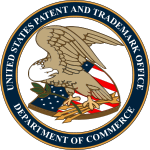 In a conference call this morning, Drew Hirshfeld, U.S. Patent and Trademark Office Deputy Commissioner for Patent Examination Policy, announced that the USPTO would be releasing revised guidance on subject matter eligibility later today and that the guidance would be published in the Federal Register on Tuesday. In fact, the revised guidance was made available for public inspection in the Federal Register reading room during the conference call (and can be found here).
In a conference call this morning, Drew Hirshfeld, U.S. Patent and Trademark Office Deputy Commissioner for Patent Examination Policy, announced that the USPTO would be releasing revised guidance on subject matter eligibility later today and that the guidance would be published in the Federal Register on Tuesday. In fact, the revised guidance was made available for public inspection in the Federal Register reading room during the conference call (and can be found here).
The revised guidance will provide an integrated approach, applying to all types of subject matter, and take the Association for Molecular Pathology v. Myriad Genetics, Inc., Mayo Collaborative Services v. Prometheus Laboratories, Inc., Alice Corp. v. CLS Bank International, and other decisions into account. In particular, the revised guidance will use the two-step analysis described by Justice Breyer in Mayo and discussed further in Alice (see "Thoughts on Alice Corp. v. CLS Int'l").
Mr. Hirshfeld noted that the Office's delay in releasing the guidance was due, at least in part, to incorporating more recent decisions such as Ultramercial Inc. v. Hulu LLC and even DDR Holdings, LLC v. Hotels.com, L.P. into the guidance. In fact, he pointed out that the revised guidance was "pulled back" to incorporate DDR Holdings, which was issued by the Federal Circuit on December 5.
Noting that the Office has "taken to heart the feedback the public has given us," Mr. Hirshfeld indicated that the publication of the revised guidance would open a 90-day comment period, and he encouraged the public to submit comments on the guidance, adding that "we are still very interested in receiving people's feedback." In addition, he announced that the Office would be holding a public forum on the revised guidance on January 21. Mr. Hirshfeld added that the Office viewed the process of revising the guidance as an "iterative" one, and that the Office would "not hesitate" to make further changes as dictated by future court decisions and public feedback. He said that Office was "trying to be as open and transparent" as possible with respect to the guidance.
With regard to the revised guidance itself, Mr. Hirshfeld declared that "most people will see that we made significant changes" as compared with the Office's prior subject matter guidance. Most of these changes will come on the life sciences side, where Mr. Hirshfeld noted the "feedback was more critical." In response to a question regarding changes to the guidance, Mr. Hirshfeld indicated that the revised guidance would incorporate all of the changes that the Office has been discussing publicly for the past several months (and which have been described in this space in a number of posts). In particular, he noted that by applying to claims that recite or involve a judicial exception, the Office was using "too broad of a funnel." In view of the Alice decision, the process outlined in the guidance would apply to claims that recite or are directed to a judicial exception rather than those that merely "involve" a judicial exception. The revised guidance will also differ with respect to application of the "markedly different" standard. Mr. Hirshfeld acknowledged that while the previous guidance was "heavily weighted on structure," the revised guidance has been broadened to include other markedly different characteristics such as functionality. Examiners will also be asked to apply a markedly different analysis in the first step of the test, which Mr. Hirshfeld expected would "help examiners make an early determination" as to subject matter eligibility, and thereby "simplify" the process. In an effort to further simplify the process, the Office has removed the 12-factor test that was set forth in the Myriad/Mayo guidance from the revised guidance, which Mr. Hirshfeld said was "too confusing." As the Office has been suggesting for months, however, the revised guidance, like the Myriad/Mayo guidance released in March, will not be confined to DNA.
Among the changes will be several new examples in the Myriad/Mayo space. These examples will be made available on the Office's subject matter eligibility website, which will be going live later today. Mr. Hirshfeld noted that some of the new examples will be similar to those presented by June Cohan, a Legal Advisor with the USPTO's Office of Patent Legal Administration, at the BIO International Convention in San Diego in June (see "Docs @ BIO: USPTO Provides Update on Myriad-Mayo Guidance"). Mr. Hirshfeld noted that examples in the Alice space are expected to be added to the website in one or two weeks, with the delay on the hi-tech side being due to the recent Ultramercial and DDR Holdings decisions. He also stated that "carefully crafted hypotheticals" were required in the Alice space because "we feel we need to give more guidance than examiners are getting from the cases."
Patent Docs will provide a more detailed analysis of the revised guidance in a subsequent post.